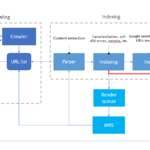Mini Course on Everything About Cravings
Ever noticed that whenever you decide to follow a diet, your cravings shoot up? You’re telling your mind not to eat certain foods, and suddenly, you feel like eating them even more. Cravings are a natural part of your weight loss journey, and understanding how to manage them effectively can make a significant difference in achieving your goals.
Cravings are driven by multiple factors, including hormonal changes, emotional triggers, nutrient deficiencies, and habitual eating patterns. Some days, you’ll crave something sweet, while on others, you just want to order a delicious meal from outside. The more aware you become of your cravings, the better you can manage them.
Instead of saying, “I won’t eat this or that,” try these better strategies to manage your cravings effectively.
Here are 7 Proven Ways to Beat Your Cravings:
1. Eat Balanced Meals
A key reason for frequent cravings is inadequate nutrition. If your meals lack essential nutrients, your body will send signals that may be misinterpreted as cravings. Ensure you are not drastically cutting calories just to lose weight. Extreme caloric restriction often leads to increased cravings, making it harder to stick to your diet plan.
- Include protein in every meal: Protein helps keep you full for longer and stabilizes blood sugar levels, reducing the likelihood of cravings.
- Increase fiber intake: Fiber slows digestion and promotes satiety. Whole grains, vegetables, and legumes are great fiber sources.
- Ensure healthy fats are included: Healthy fats from nuts, seeds, avocados, and olive oil help regulate hunger hormones.
- Stay hydrated: Sometimes, dehydration can be mistaken for hunger, leading to unnecessary cravings.
If you’re eating a limited portion of roti and sabzi without adequate protein or fiber, consider diversifying your meals. Start incorporating lean proteins like chicken, eggs, paneer, tofu, and legumes, along with a variety of colorful vegetables.
2. Clean Your Environment
Your environment plays a crucial role in shaping your eating habits. If tempting food is within your reach, you are more likely to indulge—even if you’re not truly hungry.
- Remove junk food from your home: If it’s not available, you can’t eat it.
- Delete food-ordering apps: Reducing easy access to takeout meals can help curb impulsive cravings.
- Unfollow food bloggers: Social media exposure to enticing food images can trigger cravings. Limit your exposure to such content.
- Stock up on healthy alternatives: Keep nuts, Greek yogurt, fruits, and healthy snack options available.
The less you see tempting foods, the less likely you are to crave them.
3. Say ‘NO’ More Often
Discipline is built through consistent effort. Social situations, peer pressure, and emotional triggers will constantly challenge your dietary choices. Learning to say ‘NO’ is essential for long-term success.
- Be firm in social settings: Politely decline offers of unhealthy foods and suggest alternatives when dining out.
- Practice mindful eating: Ask yourself, “Am I truly hungry, or is this just a craving?” before reaching for food.
- Visualize your goals: Remind yourself of why you started your fitness journey.
- Embrace delayed gratification: Tell yourself you will wait 10 minutes before acting on a craving. Often, the craving will pass.
While saying ‘NO’ may feel uncomfortable initially, the long-term rewards—such as feeling more confident, having higher energy levels, and seeing visible progress—will make it worthwhile.
4. Manage Your Stress Effectively
Stress is one of the biggest culprits behind emotional eating and cravings. When stressed, the body releases cortisol, a hormone that increases appetite and triggers cravings for high-calorie comfort foods.
- Practice deep breathing exercises: Box breathing (inhaling for 4 seconds, holding for 4 seconds, exhaling for 4 seconds, and holding again for 4 seconds) can help reduce stress instantly.
- Engage in regular physical activity: Exercise not only helps with weight management but also releases endorphins, which improve mood and reduce stress-related cravings.
- Try meditation and mindfulness techniques: Spending just 5-10 minutes practicing mindfulness can help you become more aware of your triggers and control cravings.
- Improve sleep quality: Poor sleep increases hunger hormones, making you more prone to cravings.
- Engage in hobbies: Keeping yourself occupied with non-food-related activities, such as painting, reading, or learning a new skill, can help distract you from emotional eating.
5. Don’t Overly Restrict Yourself—Plan Treat Meals
Excessive restriction can lead to binge eating and an unhealthy relationship with food. Instead of completely avoiding your favorite foods, plan occasional treat meals.
- Follow the 80/20 rule: Eat healthy 80% of the time, and allow yourself small indulgences 20% of the time.
- Schedule treat meals in advance: This prevents impulsive eating and helps you enjoy indulgences guilt-free.
- Savor your food: When you do have a treat, eat it mindfully. Enjoy every bite instead of rushing through it.
There are no “good” or “bad” foods—only better ways to incorporate them into a balanced diet without feeling guilty.
6. Keep Yourself Busy and Engaged
Idle minds often wander toward food. Keeping yourself occupied reduces unnecessary cravings.
- Reignite old hobbies: Think back to activities you once loved—painting, dancing, writing, or music—and immerse yourself in them again.
- Try new experiences: Learning a new skill, such as photography, cooking healthy meals, or playing an instrument, can help keep your mind engaged.
- Socialize outside of food-centric settings: Plan activities like hiking, sports, or cultural events instead of meeting friends solely for meals.
By shifting your focus to non-food-related activities, you can naturally reduce the urge to eat out of boredom.
Final Thoughts
Managing cravings is not about willpower alone—it’s about strategy. The more you understand your triggers and implement these effective strategies, the better control you will have over your cravings.
Try these techniques, and if you need additional guidance, working with a coach can provide accountability and support in overcoming such challenges.
Lalit Gulati
Your Transformation Coach









